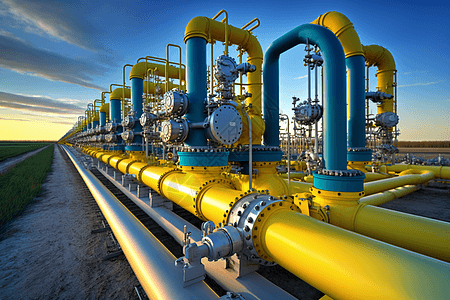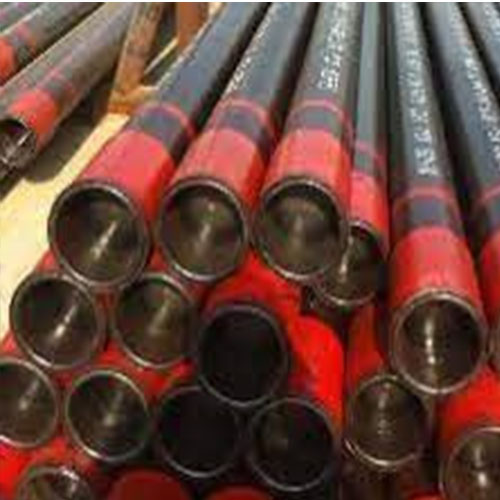Table of Contents
مزايا استخدام أنبوب API 5L لتطبيقات الأنابيب والغلاف
بالإضافة إلى قوته ومتانته، فإن أنبوب API 5L معروف أيضًا بمقاومته الممتازة للتآكل. يتم معالجة الفولاذ المستخدم في أنبوب API 5L خصيصًا لمنع الصدأ والتآكل، مما يضمن بقاء الأنبوب في حالة جيدة حتى في البيئات المسببة للتآكل. تساعد مقاومة التآكل هذه على إطالة عمر الأنبوب، مما يقلل الحاجة إلى عمليات الاستبدال والصيانة المتكررة.
ميزة أخرى لاستخدام أنبوب API 5L لتطبيقات الأنابيب والغلاف هي تعدد استخداماته. هذا النوع من الأنابيب متوفر في مجموعة واسعة من الأحجام والسماكات، مما يجعله مناسبًا لمجموعة متنوعة من التطبيقات في صناعة النفط والغاز. سواء كنت بحاجة إلى أنبوب بقطر صغير لبئر ضحل أو أنبوب بقطر كبير لعملية حفر عميقة، يمكن تخصيص أنبوب API 5L لتلبية متطلباتك المحددة.
علاوة على ذلك، أنبوب API 5L سهل التركيب والصيانة، مما يوفر الوقت. والمال على تكاليف التركيب والصيانة. تم تصميم الأنبوب ليكون خفيف الوزن وسهل التعامل معه، مما يجعل تركيبه سريعًا وسهلاً في الميدان. بالإضافة إلى ذلك، تساعد الخصائص المقاومة للتآكل لأنبوب API 5L على تقليل الحاجة إلى الصيانة المتكررة، مما يوفر الوقت والمال طوال عمر الأنبوب.
بشكل عام، يوفر أنبوب API 5L عددًا من المزايا لتطبيقات الأنابيب والغلاف في صناعة النفط والغاز. إن قوتها العالية، ومتانتها، ومقاومتها للتآكل، وتعدد استخداماتها، وسهولة تركيبها تجعلها خيارًا موثوقًا وفعالاً من حيث التكلفة لمجموعة واسعة من عمليات الحفر. من خلال اختيار أنبوب API 5L لاحتياجات الأنابيب والأغلفة الخاصة بك، يمكنك ضمان تشغيل عملياتك بسلاسة وكفاءة، مع الحد الأدنى من متطلبات التوقف والصيانة.

كيفية ضمان الامتثال لمعايير API 5L لتصنيع الأنابيب

API 5L عبارة عن مجموعة من المعايير التي تحكم تصنيع واختبار الأنابيب الفولاذية المستخدمة في صناعة النفط والغاز. تم تطوير هذه المعايير والحفاظ عليها من قبل معهد البترول الأمريكي (API) لضمان جودة وسلامة الأنابيب المستخدمة في نقل النفط والغاز. تُستخدم أنابيب API 5L على نطاق واسع في العديد من التطبيقات، بما في ذلك الأنابيب والغلاف لآبار النفط والغاز.
لضمان الامتثال لمعايير API 5L لتصنيع الأنابيب، من الضروري أن يتبع المصنعون الإرشادات المنصوص عليها بواسطة API. يتضمن ذلك استخدام المواد المناسبة وعمليات التصنيع وإجراءات الاختبار لتلبية متطلبات API 5L.
يعد الاختبار جانبًا مهمًا آخر لضمان الامتثال لمعايير API 5L لتصنيع الأنابيب. يجب على الشركات المصنعة إجراء اختبارات مختلفة على الأنابيب للتحقق من جودتها وأدائها. قد تشمل هذه الاختبارات التحليل الكيميائي، والاختبار الميكانيكي، والاختبار غير المدمر، والاختبار الهيدروستاتيكي للتأكد من أن الأنابيب تلبي متطلبات API 5L.
لضمان الامتثال لمعايير API 5L، يجب على الشركات المصنعة أيضًا الاحتفاظ بالوثائق المناسبة لعملية التصنيع و نتائج الإختبار. تعد هذه الوثائق ضرورية للتحقق من أن الأنابيب تلبي متطلبات API 5L ولتوفير إمكانية التتبع في حالة وجود أي مشكلات أو أعطال.
بشكل عام، يتطلب ضمان الامتثال لمعايير API 5L لتصنيع الأنابيب نهجًا شاملاً يتضمن استخدام المواد المناسبة. واتباع عمليات التصنيع الصحيحة وإجراء اختبارات شاملة والحفاظ على الوثائق المناسبة. من خلال الالتزام بهذه الإرشادات، يمكن للمصنعين إنتاج أنابيب عالية الجودة تلبي متطلبات API 5L وتضمن سلامة وموثوقية عمليات النفط والغاز.
في الختام، تلعب معايير API 5L دورًا حاسمًا في ضمان الجودة والسلامة الأنابيب المستخدمة في صناعة النفط والغاز. يجب على الشركات المصنعة اتباع الإرشادات التي وضعتها واجهة برمجة التطبيقات (API) لضمان الامتثال لهذه المعايير. باستخدام المواد المناسبة، واتباع عمليات التصنيع الصحيحة، وإجراء اختبارات شاملة، والحفاظ على الوثائق المناسبة، يمكن للمصنعين إنتاج أنابيب تلبي متطلبات API 5L وتوفر أداءً موثوقًا في تطبيقات النفط والغاز.
API 5L is a set of standards that govern the manufacturing and testing of Steel Pipes used in the oil and gas industry. These standards are developed and maintained by the American Petroleum Institute (API) to ensure the quality and Safety of pipes used in the transportation of oil and gas. API 5L tubes are widely used in various applications, including tubing and casing for oil and gas wells.
To ensure compliance with API 5L standards for tube manufacturing, it is essential for manufacturers to follow the guidelines set forth by the API. This includes using the appropriate materials, manufacturing processes, and testing procedures to meet the requirements of API 5L.
One of the key requirements of API 5L standards is the use of high-quality materials in the manufacturing of tubes. The materials used must meet specific chemical composition and mechanical properties to ensure the strength and durability of the tubes. Manufacturers must carefully select and test the materials to ensure they meet the requirements of API 5L standards.
In addition to using the right materials, manufacturers must also follow specific manufacturing processes to produce tubes that meet API 5L standards. This includes processes such as hot rolling, cold drawing, and heat treatment to achieve the desired properties in the tubes. Manufacturers must also ensure that the tubes are produced with the correct dimensions and tolerances to meet the requirements of API 5L.
Testing is another critical aspect of ensuring compliance with API 5L standards for tube manufacturing. Manufacturers must conduct various tests on the tubes to verify their quality and performance. These tests may include chemical analysis, mechanical testing, non-destructive testing, and hydrostatic testing to ensure the tubes meet the requirements of API 5L.
To ensure compliance with API 5L standards, manufacturers must also maintain proper documentation of the manufacturing process and test results. This documentation is essential for verifying that the tubes meet the requirements of API 5L and for providing traceability in case of any issues or failures.
Overall, ensuring compliance with API 5L standards for tube manufacturing requires a comprehensive approach that includes using the right materials, following the correct manufacturing processes, conducting thorough testing, and maintaining proper documentation. By adhering to these guidelines, manufacturers can produce high-quality tubes that meet the requirements of API 5L and ensure the safety and reliability of oil and gas operations.
In conclusion, API 5L standards play a crucial role in ensuring the quality and safety of tubes used in the oil and gas industry. Manufacturers must follow the guidelines set forth by the API to ensure compliance with these standards. By using the right materials, following the correct manufacturing processes, conducting thorough testing, and maintaining proper documentation, manufacturers can produce tubes that meet the requirements of API 5L and provide reliable performance in oil and gas applications.

